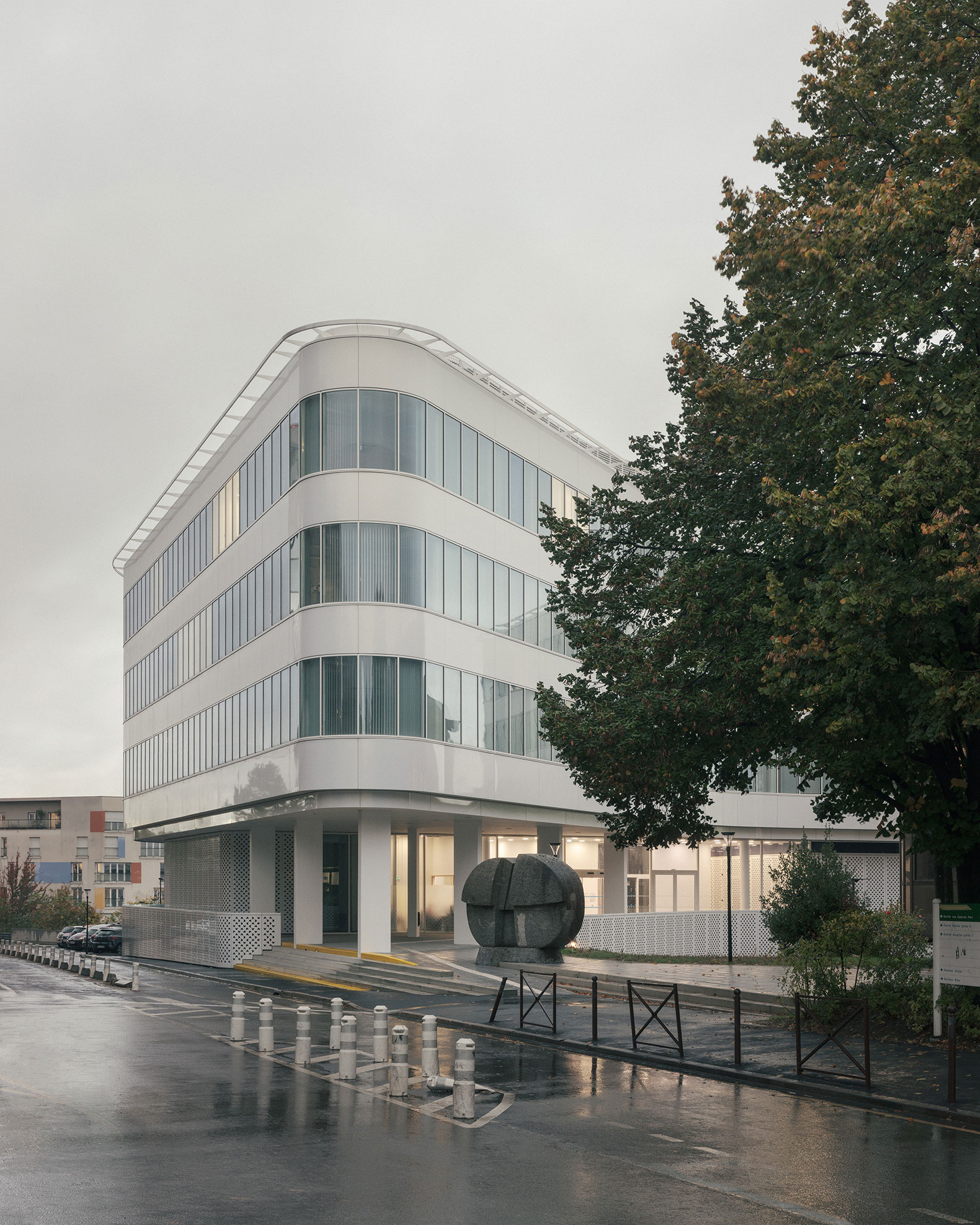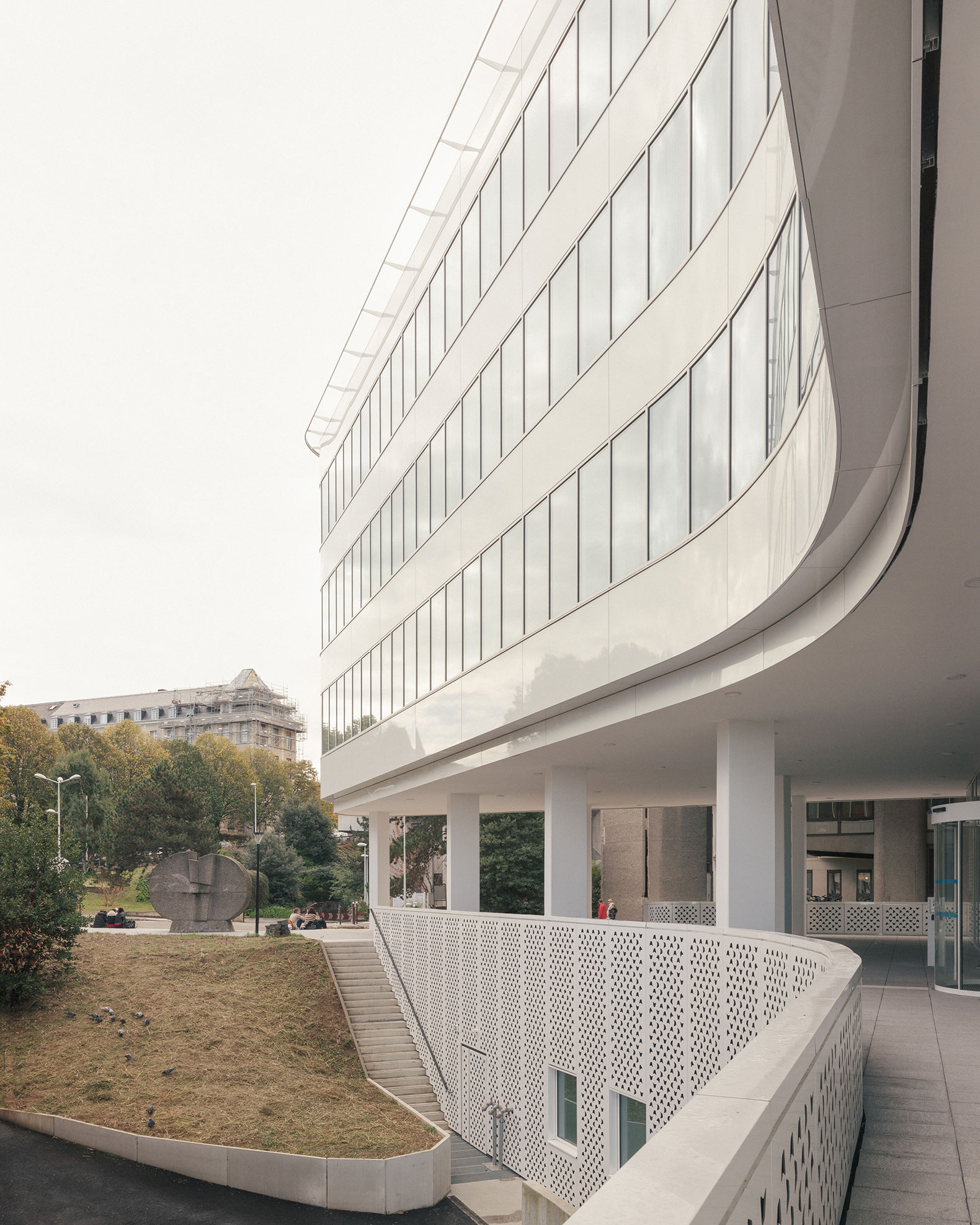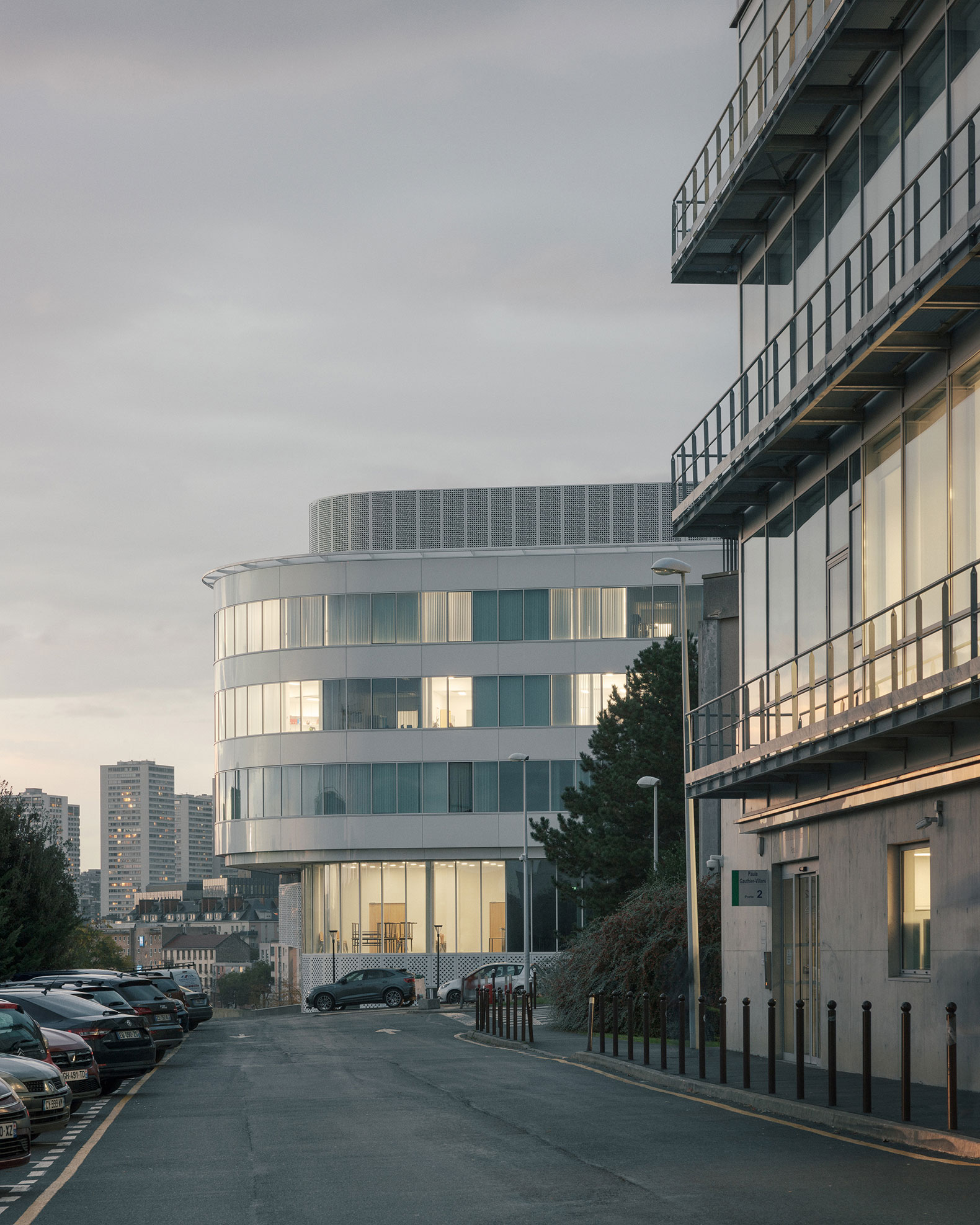The façade is made of glass and transparent polished aluminium to take advantage of the play of light and the shape of the building. The curves give different appearances depending on the lighting and give a contemporary feel to the medical school and hospital environment.

Extension of the faculty of medicine, Kremlin-Bicêtre University Hospital by Pargade Architectes. Photograph by Charly Broyez.
Description of project by Pargade Architectes
"The Ribbon"
The extension of the Faculty of Medicine, at the heart of the Kremlin-Bicêtre University Hospital site, expresses its ambition to constitute a centre of excellence for French research and education, open to the city and the scientific world.
Located on a dominant point, it enjoys an exceptional panoramic view of Paris and its suburbs. The shape of the building takes up the geometry of the site of implantation and creates a polyhedron whose rounded corners dialogue with the existing architecture. Particular attention is paid to the quality of life: spaces for conviviality and relaxation are grouped together in the centre of each unit.
The main entrance to the institute is positioned as close as possible to the existing teaching and research building and opposite the entrance to the CHU.
The forecourt, laid out to create the link between the three establishments, creates a real public space, a place of conviviality and exchanges between students, researchers and doctors.

Extension of the faculty of medicine, Kremlin-Bicêtre University Hospital by Pargade Architectes. Photograph by Charly Broyez.
Space
This star-shaped geometry, deduced from the shape of the site, develops the optimal façade line to illuminate six identical laboratory and office modules distributed around the periphery of the building. The remaining space at the heart of the building houses the "service" rooms.
The spatial organisation is compact, unitary and economical in terms of surface and circulation.
The continuity of the rooms allows the borders between sectors to vary, ensuring interchangeability between offices and laboratories and guaranteeing future developments

Extension of the faculty of medicine, Kremlin-Bicêtre University Hospital by Pargade Architectes. Photograph by Charly Broyez.
Shape and materials
The glass and clear polished aluminium used in the façade play with the light and enhance the sculptural form of the building. Like a polished marble sculpture by Brancusi, the building is reflected in its curves and changes appearance depending on the light outside.
Its curves echo the environment of the medical school and hospital, translating the vocabulary present on the site into a contemporary form.
In perforated aluminium, the bedrock and the termination take up the organic motif of the plan. The fifth façade, the treatment of the roof, is carefully designed to ensure the quality integration of technical equipment and to preserve the view towards the distance.










































